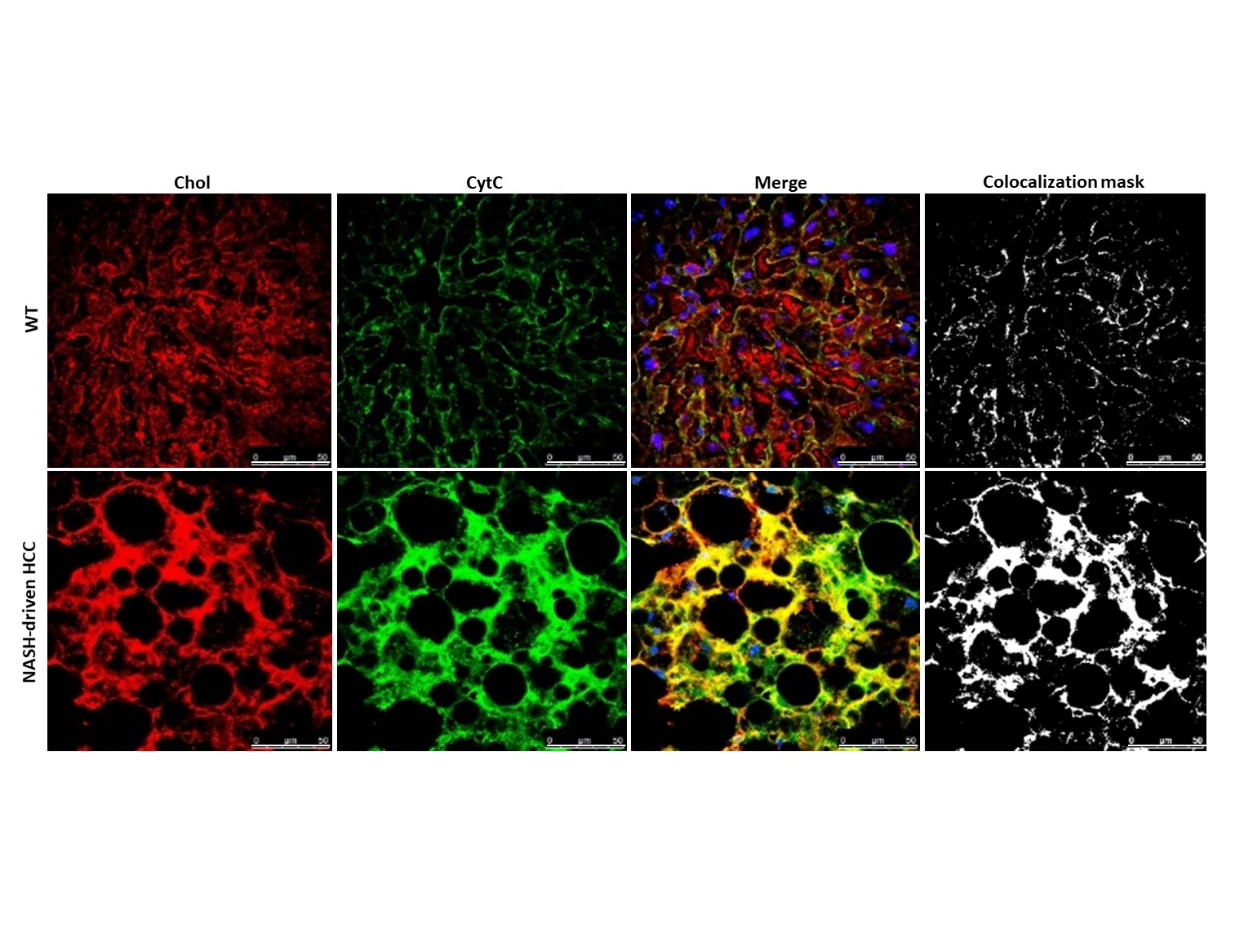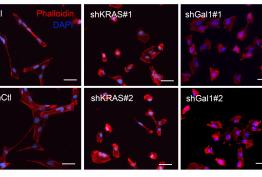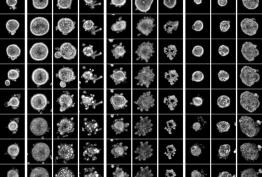Altered cholesterol metabolism has been implicated in the development of various liver diseases, such as non-alcoholic steatohepatitis (NASH) and hepatocellular carcinoma (HCC), as well as in neurodegenerative disorders such as Alzheimer or rare diseases such as Niemann-Pick type C. The journal STAR protocols (Cell Press) has published a protocol characterized by the group "Mitochondrial regulation of cell death" of the IIBB that has been co-directed by Carmen García-Ruiz and José C Fernandez-Checa, in which the production of a recombinant protein consisting in the fusion of Glutathione-S-Transferase with Perfringolysin (PFO) is described. "The resulting product GST-PFO allows the analysis of the localization of cholesterol in cell membranes in liver samples, both from human and from experimental models with NASH and HCC" as explained by Leire Goicoechea, the first author of the study.
GST-PFO fluorescence analysis
The analysis of the fluorescence of GST-PFO in cholesterol-binding is versatile, sensitive and stable over time, unlike other approaches that have been used so far, such as the detection of cholesterol by filipin. The presence of GST allows detection of the probe using anti-GST antibodies in a variety of techniques such as immunofluorescence, ELISA, or flow cytometry.
As shown in the article, the application of GST-PFO allows the detection of cholesterol in the plasmatic and mitochondrial membrane both in samples from patients and from experimental models of NASH and HCC, observing a substantial increase with respect to control samples.
Likewise, the use of GST-PFO in brain and liver samples of rare disease models, such as Niemann-Pick type C neurodegenerative lysosomal disease, reveals an increase in free cholesterol in the lysosomal membrane.
In summary, the researchers conclude that "in addition to NASH and HCC, the recombinant GST-PFO probe can be used for the detection and diagnosis of neurodegenerative diseases characterized by an increase in free cholesterol, such as Alzheimer's disease (AD)". In this sense, the use of GST-PFO shows a higher load of free cholesterol in hippocampus samples from patients with Alzheimer's disease and Down syndrome, considered a genetic form of AD, both in the lysosomal and mitochondrial fraction.
Item Reference:
L Goicoechea, F Arenas, F Castro, S Nuñez, S Torres, C Garcia-Ruiz, JC Fernandez-Checa.
STAR Protoc, 2021 Dec 29;3(1):101068. doi: 10.1016/j.xpro.2021.101068







